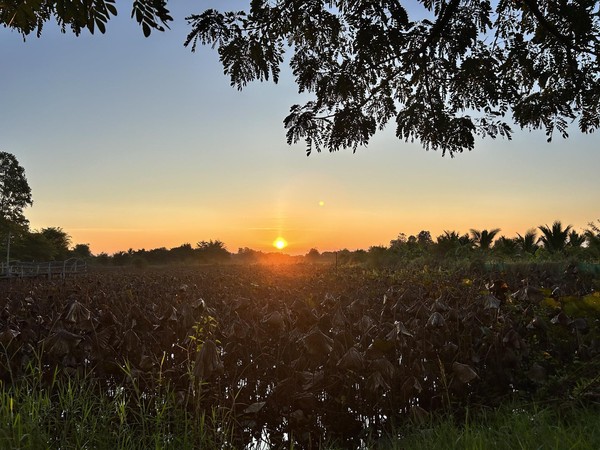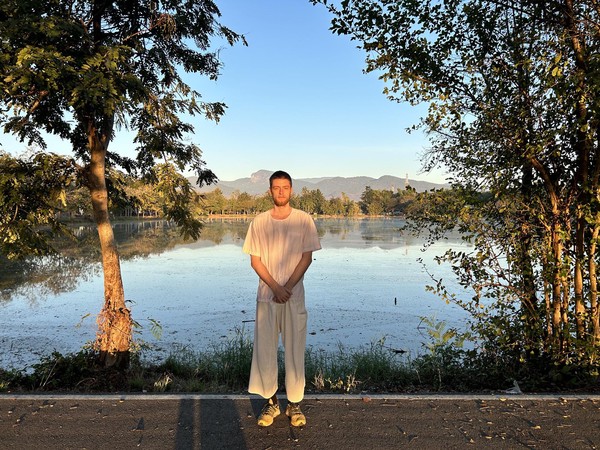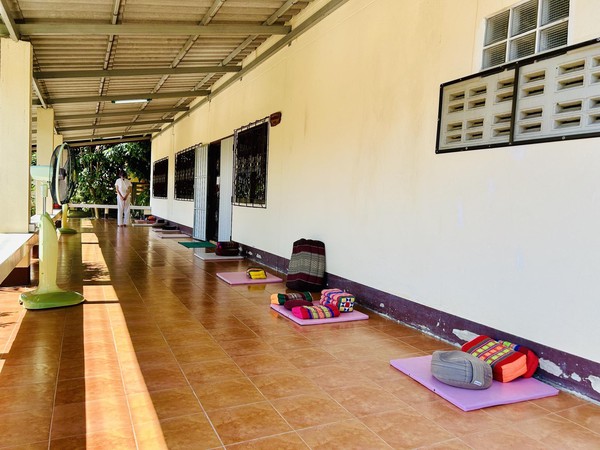
On the last day of 2023 at a Cafe in Siem Reap, Cambodia we met a fellow traveler, Liana, who had been on the move for quite a while and was preparing to go back to her home country. As we exchanged experiences and motivations, she told us about her impressions of doing a silent Vipassana meditation retreat for 21 days which she described as a great journey inwards that turned out to be very valuable for her. A friend of us had told us about a similar experience earlier, so the idea of attending a retreat was already floating around, but this encounter and Liana’s description of her experience really convinced both of us to try it out. So a few days later after a 24 hour bus ride from Cambodia we arrived in Chom Thong, a small town in the north of Thailand, committed to do a week of meditation at the Northern Vipassana International Meditation Center. This blog post is just supposed to give a short glimpse into the program and recap Jannes’ impressions, a retreat is something very introspective and personal, other people may have an experience very different, although we think many people come to realize similar things about themselves.
Vipassana & the center’s method #
The general method of meditation taught at the center is called Vipassana (roughly meaning “insight” in English) and its goal is to cultivate mindfulness and gain intuitive understanding into “how things really are”. That’s probably not the best definition, so instead of trying to go into detail here, I encourage you to look elsewhere for a better explanation. Anyways, I assume the goal of being mindful about one’s surroundings and inner state, such as thoughts and feelings that arise due to the situations we are in and not get carried away by them should be sort of self-explanatory.
The specific method at the center teaches meditation units consisting of 3 exercises; prostration (bowing), walking, sitting, that are always combined into a sequential block without breaks in between the exercises (breaks are in between units). Everyone generally follows the same schedule of 4am waking, 6am breakfast, 11am lunch, 10pm sleeping, although personally I went to sleep earlier than 10pm. Once a day we met our personal teacher to share our impressions, ask questions and receive instructions to refine specifics of the method such as changes in the meditation object (what one directs attention to during meditating). While the teaching is definitely Buddhist and the teaching sessions are set within a Buddhist context, it did not feel like transmission of Buddhism beliefs is core to the program, it just provides context and terminology to the practice. In between meditation units that are done according to one’s own pace and personal instructions by the teacher, we were discouraged to engage in any activities that distract us from the practice, this includes talking, writing, reading, basically anything that would require shifting one’s undivided attention to something not related to meditation. The environment of the center and its surroundings is pretty much optimal for invoking a sense of calm and peace, it is behind the main temple along quiet streets where the different buildings are situated. Different meditation areas are provided, one may choose to go to those shared spaces or to practice in one’s own room.
Jannes’ recap #
Personally, I found the strict schedule with only 2 meals a day and lack of entertainment & distractions to be less challenging than expected and quickly felt the practice to be rewarding albeit very difficult at times. Feelings and thoughts that arise came up in an amplified form as I was put in a calm environment deprived of the usual distractions that dominate during a normal day. Especially feelings of doubt, frustration were common as I questioned my “technique” and was confronted with challenges such as physical pain, restlessness of mind or drowsiness, depending on time of day and quality of sleep the night before. However, with the passing of time and a growing familiarity of the obstacles encountered during the practice, I also experienced a state of mind that probably counts as “mindful” during and in between the meditation units, at the very least a heightened awareness of my own feelings and thoughts without being captivated by them. The sessions with my teacher were always helpful and I asked many questions as I attempted to analyze and conceptualize my experience. I was encouraged to keep the analysis to a minimum and disengage with this habit during the meditation session, but observe my analytical mind, mental patterns and associated feelings.
After a week of practice I could definitely see how I am progressing deeper towards the core of my own mind and mental processes, this sense of getting closer to something inside was described by others as “peeling away layers of an onion”. A simple example may be judgmental thoughts that came up frequently, for instance I sometimes noticed myself thinking that another person “is being too serious”, but on closer examination I could see my competitive tendencies in combination with insecurity. Peeling back the onion means to see beyond the thought and realize the more fundamental feeling that lies below it. I am sure that continuing the practice for longer than 7 days results in more and more layers being peeled back (at least temporarily), what lies below I don’t know, but I would like to find out and do another retreat for a longer time. Needless to say, the quality of mind during the retreat did not persist for very long after leaving, but I got a glimpse into what is possible and hopefully I’ll be able to be at least a little more mindful in my daily life having seen the possibilities.











